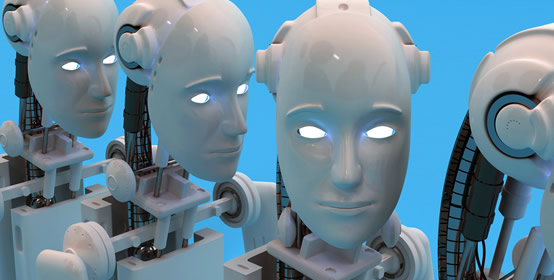
In 2025, robots are no longer a futuristic concept; they are everywhere. They work in factories, warehouses, hospitals, and even homes. From humanoid assistants to self-driving delivery vehicles, robots are becoming an integral part of daily life. This shift is raising questions about the future of work, safety, and how humans and machines will coexist. While concerns about automation persist, the reality is that robots are more likely to enhance industries rather than replace human jobs entirely.
Manufacturing and Warehousing
Robots have transformed the manufacturing and logistics sectors. Companies like Amazon use over 750,000 robots in their warehouses to move packages, sort items, and assist with packing. Proteus, an autonomous warehouse robot, moves shelves without human intervention, while Sparrow, an AI-powered robotic arm, picks and places individual items. These robots don’t replace workers but instead improve efficiency, allowing humans to focus on more complex tasks.
Meanwhile, startups like Apptronik are pushing boundaries with humanoid robots. Their latest creation, Apollo, is designed to work alongside humans in warehouses and factories. With $350 million in funding, Apptronik is scaling up production and exploring applications in healthcare and elder care.
In automotive manufacturing, robotic arms assemble vehicles with unmatched precision, reducing human error and improving quality control. Tesla’s Gigafactories employ thousands of robots to handle tasks ranging from welding to battery assembly. Automation has sped up production while maintaining high safety standards.
Food Delivery and Retail
Robot delivery services are gaining traction. Uber Eats has introduced robotic couriers in Jersey City, offering customers the choice between a self-driving robot and a traditional human courier. These compact, self-navigating robots travel at 5 mph and can operate in different weather conditions. The goal is not to eliminate delivery jobs but to supplement human workers, especially during peak hours.
Retailers are also leveraging robotics. Stores now use AI-powered stocking robots to track inventory and restock shelves efficiently. This technology reduces waste, improves supply chain management, and enhances the shopping experience. Walmart, for example, has deployed robots to scan aisles and update inventory in real time, reducing product shortages and improving stock accuracy.
Fast-food chains are also integrating automation. Companies like McDonald's and Chipotle are testing robotic kitchen assistants that prepare food, flip burgers, and handle repetitive cooking tasks. These innovations streamline operations and ensure consistent quality while allowing human employees to focus on customer service.
Healthcare and Elder Care
Hospitals are integrating robotics to assist doctors and nurses. Surgical robots help perform delicate procedures with precision, while robotic exoskeletons aid in rehabilitation. The aging population has also led to the rise of companion robots that assist elderly individuals with daily tasks, from reminding them to take medications to offering social interaction.
AI-powered diagnostic tools help doctors analyze medical images, detect diseases earlier, and recommend treatment options with greater accuracy. Robotics in pharmacies has also improved medication dispensing, reducing errors and ensuring efficiency in high-demand environments.
In elder care, robots are addressing the growing need for support. Japan has been a leader in developing humanoid robots like Pepper, which interacts with seniors, reducing loneliness and providing cognitive stimulation. Other robotic assistants help with mobility, ensuring that aging individuals maintain independence longer.
Addressing Job Displacement Concerns
One of the biggest fears surrounding automation is job loss. While robots can handle repetitive and physically demanding tasks, they also create new opportunities. The World Economic Forum predicts that automation and AI will impact 86% of businesses by 2030, but instead of eliminating jobs, they will shift roles. Workers will transition to more technical, supervisory, and creative positions.
For example, while a robot might assemble a product on a factory line, a human technician will be needed to maintain and program it. The rise of robotics has increased demand for engineers, AI specialists, and technicians who can develop, operate, and troubleshoot these systems.
Governments and corporations are investing in retraining programs to prepare workers for the evolving job market. Vocational schools and universities are expanding programs focused on robotics, AI, and automation, ensuring that the workforce remains adaptable in the face of technological change.
Robots are not here to take over but to assist. As industries integrate automation, the focus should be on adapting rather than resisting. Education and workforce training programs must evolve to equip workers with the skills needed in a tech-driven economy. Governments and businesses must collaborate to ensure a smooth transition, creating policies that protect workers while encouraging innovation.
With the rapid development of robotics, ethical considerations must also be addressed. Ensuring responsible AI usage, maintaining data privacy, and preventing bias in automated decision-making are critical factors in building a fair and equitable future.
While change can be intimidating, history shows that technological advancements ultimately lead to economic growth and new opportunities. The robots are here, but there’s nothing to fear—only new possibilities to embrace.